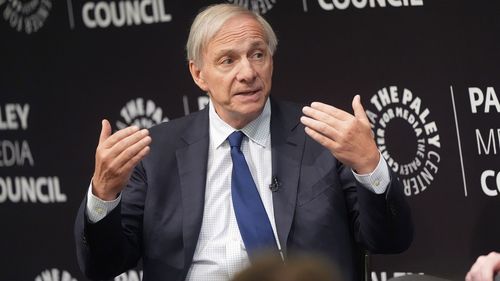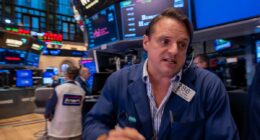Share this @internewscast.com
According to the book, How Countries Go Broke: The Big Cycle, released today, he argues that the US government’s debt is “approaching the point of no return” and could enter a “death spiral” endangering the stability of the largest global economy.
Warnings about the deficit from some economists and investors have persisted for years. However, this year saw Wall Street begin to pay more attention due to the volatility in the bond market, exacerbated by US President Donald Trump’s tariffs and tax legislation.

Dalio describes a scenario where rising interest rates escalate credit risk, decreasing demand for debt, and ultimately leading to further interest rate hikes as a classic “debt death spiral.”
The higher interest rates investors demand to loan the government money leave less money for running a country, increase interest rates for consumers and businesses and generally leave a country with fewer options to raise cash.
“To me, that suggests that US policy makers should be more, not less, conservative in dealing with the government’s finances because the worst thing possible would be to have its finances in bad shape during difficult times,” Dalio writes.
Turmoil in the bond market
Trump’s tax bill is set to raise the deficit because it slashes tax revenues without enough cuts to spending to balance things out.
The current US deficit is on unsustainable path and is “more than the market can bear,” Dalio said at an event on May 22 in New York ahead of the book’s release.
He said that he anticipates it will be roughly three years before the US is in a “critical situation”.
“I think we should be afraid of the bond market,” Dalio said.
“I can tell you that this is very, very serious.”
Tax cuts can be a boon for Wall Street, and the stock market cheered Trump’s tax cuts during his first term.
But what makes this time different is adding to the deficit while the federal debt burden has ballooned: the ratio of federal debt to gross domestic product, or the total value of goods and services produced in the economy, soared from 104 per cent in 2017 to 123 per cent in 2024, according to the Treasury Department.
“We’re now talking about deficits and a national debt-to-GDP ratio that are really going to be unprecedented, except for recent recessionary times,” Alan Auerbach, a professor of economics at UC Berkeley, previously told CNN.
Dalio’s book comes out days after JPMorgan Chase chief executive Jamie Dimon said on Friday at the Reagan National Economic Forum that a “crack” in the bond market “is going to happen”.
“The US long bond is already near its highest levels since the (2008 financial crisis),” Ajay Rajadhyaksha, an analyst at Barclays, said in a recent note.
“As markets absorb the details of the new tax bill, and realise that deficits are likely to keep rising for the foreseeable future, the risk is that longer yields keep rising as well.”
Nor have Democrats and Republicans shown they can work together on the problem, Dalio said at the May 22 event.
“It’s like being on a boat that’s headed for rocks,” he said, “and they agree that they should turn, but they can’t agree on how to turn.”














